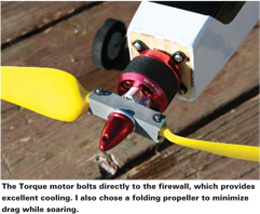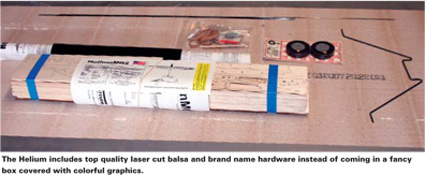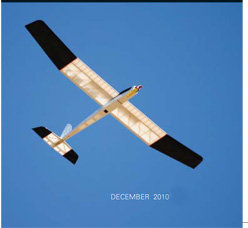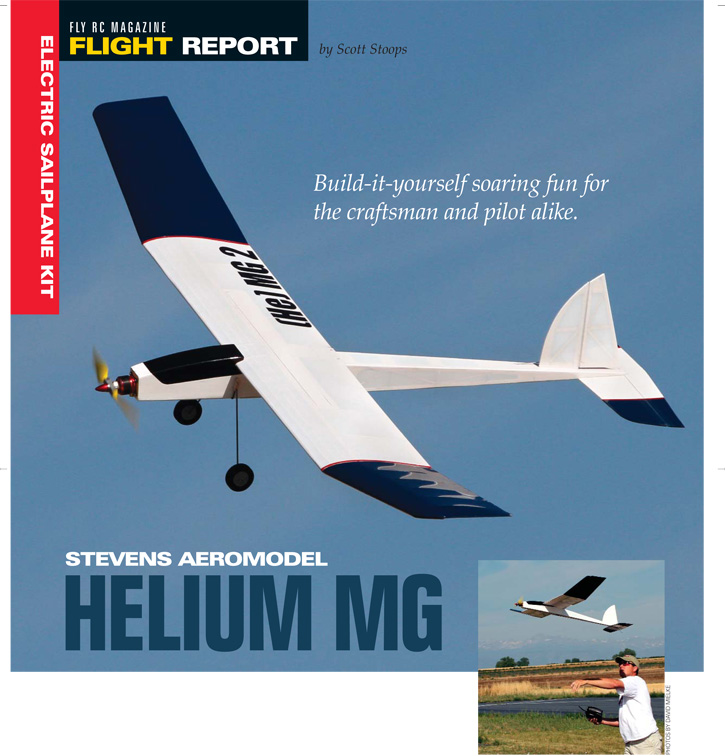|

with minimal residue. In addition to following the instructions precisely, I tend to work a couple of steps between final gluing. This allows the jigging feature of the laser cut structure to better align itself as the assemblies come together.
The only area of the build where I see potential to make an unrecoverable mistake is with the joiner blades and their associated slots that join the outer panels with the inner wing section. Each Delrin joiner slots into the individual panels and requires a tight yet still removable fit. If excess CA were to be applied or inadvertently enter the slots, it would prevent the joiners from fitting correctly. Be very careful to apply only enough adhesive to get the job done in this critical step.
For me, basic assembly is the most enjoyable part of any kit build. Each part coming together is very fulfilling and stokes the instant gratification fire that seems to burn in me. That said, take your time and ensure each assembly is square and plumb before final gluing. Using that technique, youll be rewarded with a great flying model surprisingly quickly.
COVERING TIPS
Although youre probably itching to heat up that covering iron, the first step to a great covering job is a great sanding job. I start with 150 grit and work down to 400 grit. Stevens Aero included a really nice foam sanding block that does a great job. I supplement that with a traditional 12-inch aluminum sanding T. An easy way to check your sanding work for imperfections is by lightly brushing your fingertips over the surfaces to feel for imperfections. All but the smallest imperfections will show through the covering, so your time is well spent here. Finally, I use a painting tack cloth to remove as much sanding dust as possible.
Covering is my least favorite part of the kit building process and I this attribute my lack of covering creativity. For me, covering is functional. For the artistic in our group, it should look like a blank canvas awaiting your masterpiece. SA Aerofilm Lite is a great choice for the Helium. It is a very lightweight covering, and takes very little heat to shrink. Be sure to test your iron with the covering on a low setting and slowly work the heat higher as necessary. I prefer to tack the entire outside of each structure, including trimming and sealing the edges before shrinking. With some care, a heat gun can be used to shrink the open covering areas tight. Finally, youll want several sharp No. 11 hobby blades on hand. Aerofilm Lite tears very easily when snagged, and quickly dulls blades.
ELECTRONICS AND FINAL ASSEMBLY TIPS
The rudder and elevator servos mount upside down in the fuselage and attach to the flight controls with genuine Dubro pushrods and control horns that are included in the kit. I chose the recommended Hitec HS-65HB servos, and have been quite pleased with their centering and speed. The receiver mounts on the top of the battery tray and can be accessed with the wing removed.

|
SPECS PLANE: Helium MG2
MANUFACTURER: Stevens Aeromodel
DISTRIBUTOR: Stevens Aeromodel
TYPE: Electric Sailplane
FOR: Intermediate builders and pilots
WINGSPAN: 77.75 in.
WING AREA: 645 sq. in.
WEIGHT: 30.8 oz.
WING LOADING: 6.88 oz./sq. ft.
WING CUBE LOADING: 3.2
LENGTH: 44.5 in.
RADIO: 3-4 channels required; flown with a Hitec Aurora 9 transmitter, Optima 6 receiver, 2 Hitec HS-65HB servos (flight controls), 1 Hitec HS-56 (spoiler)
POWER SYSTEM: Torque 2818T-900 brushless motor, 11×7 folding prop, Castle Creations Phoenix 45 amp speed control, Gravity Hobby 3S 2200mAh 30C LiPo battery
FULL THROTTLE POWER: 28.2 amps, 330 watts; 10.7 W/oz., 171.5 W/lb. TOP RPM: 8730
DURATION: 20+ minutes cruising flight, hours with some lift
MINIMAL FLYING AREA: RC club field or large park
PRICE: $125
COMPONENTS NEEDED TO COMPLETE: 200+ watt electric power system including brushless motor, ESC, prop and 3S 1500-2200 mAh LiPo pack, two 6-9 gram micro servos for the flight controls, Hitec HS-56 for spoiler, two rolls Aerofilm Lite covering, various adhesives, covering tools SUMMARY The Stevens AeroModel Helium MG2 powered glider eloquently combines modern laser engineered construction and performance with aesthetics inspired by classic sailplanes of the past. Built from only the highest quality laser cut balsa and ply, the Helium is an incredibly light sailplane that thermals well with the motor off and literally sips the electrons when cruising. Matched with a modern brushless motor and LiPo battery, cruising flights of more than 20 minutes are common, while thermalling between short bursts of power for vertical climbs can yield literally hours of soaring fun.

|

